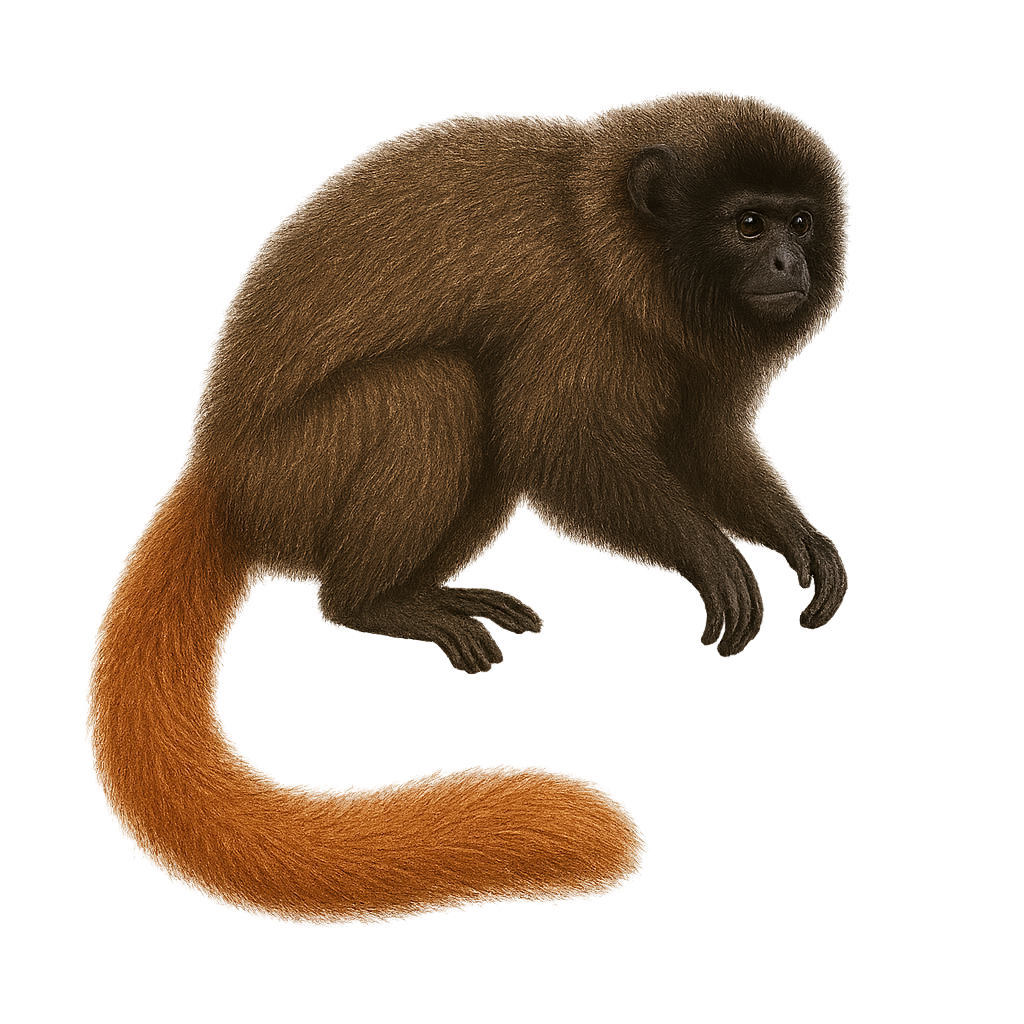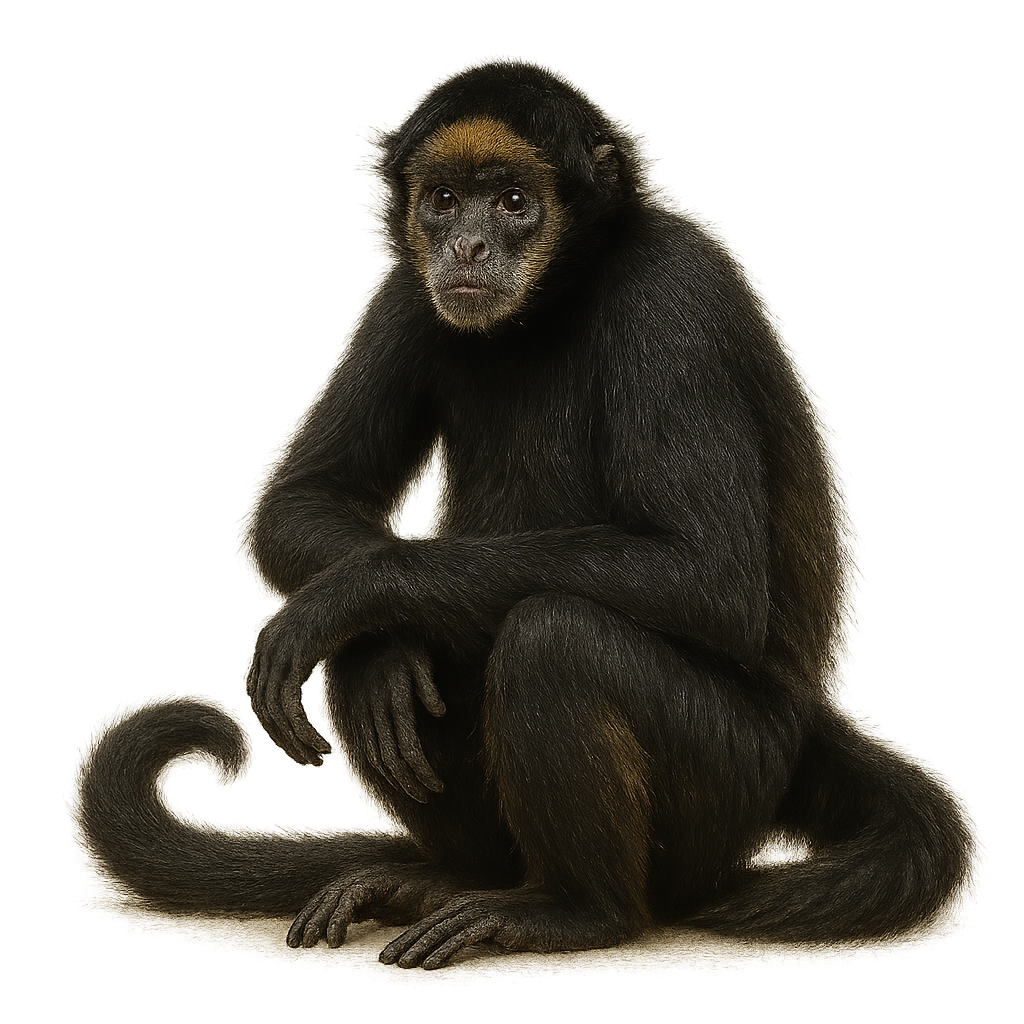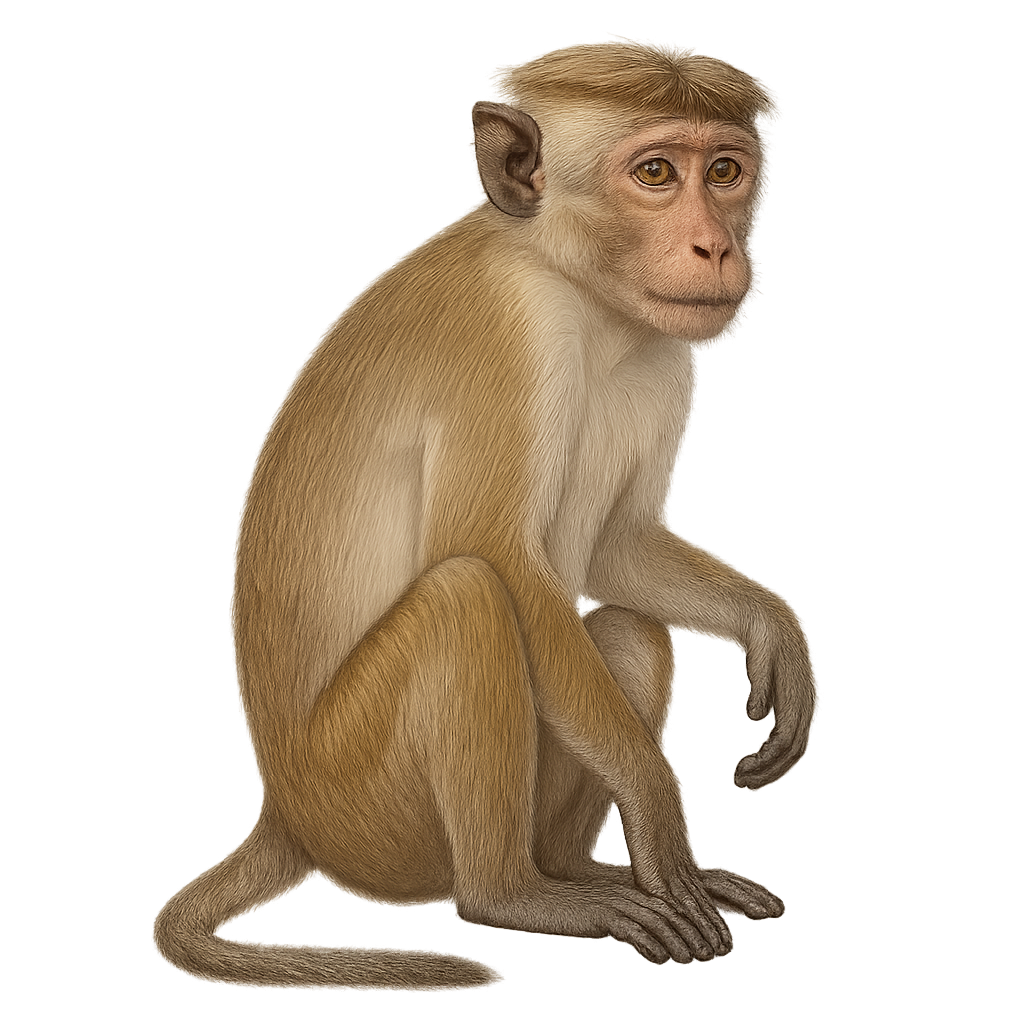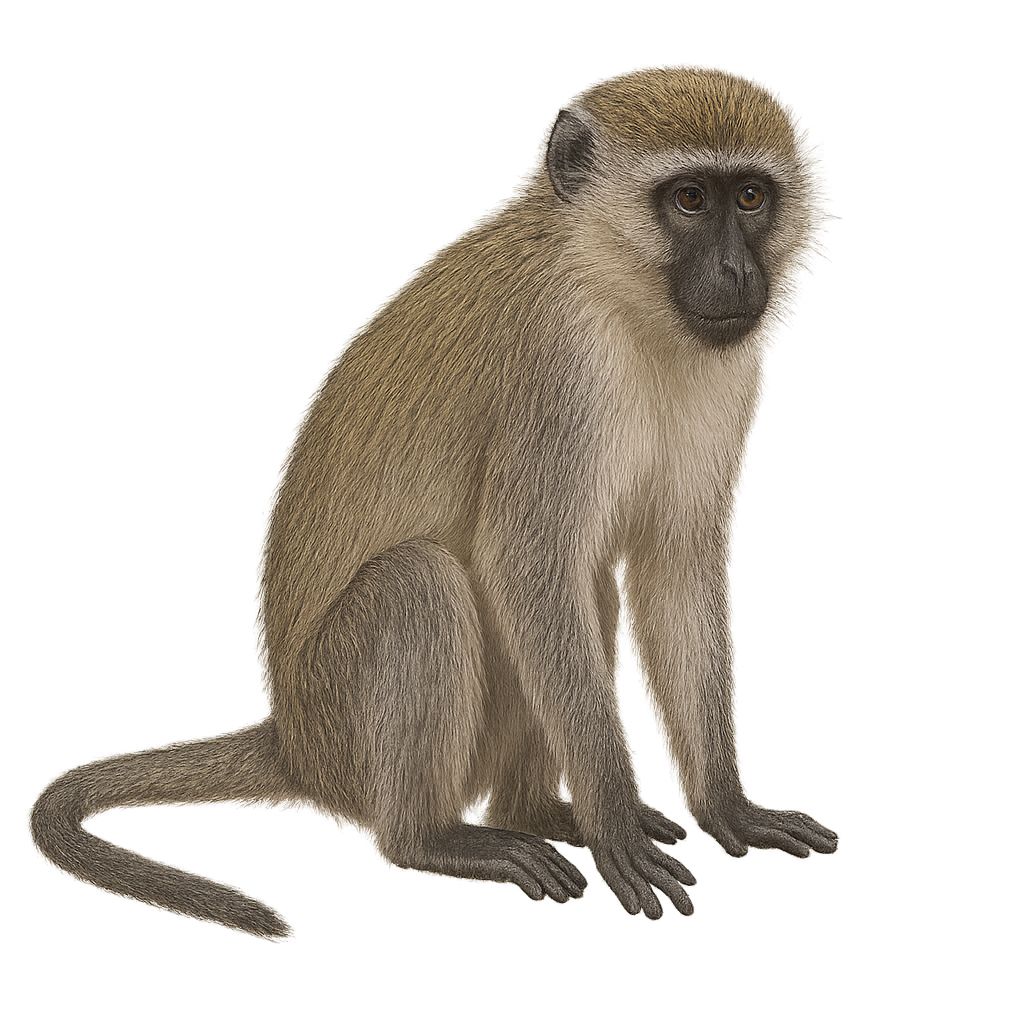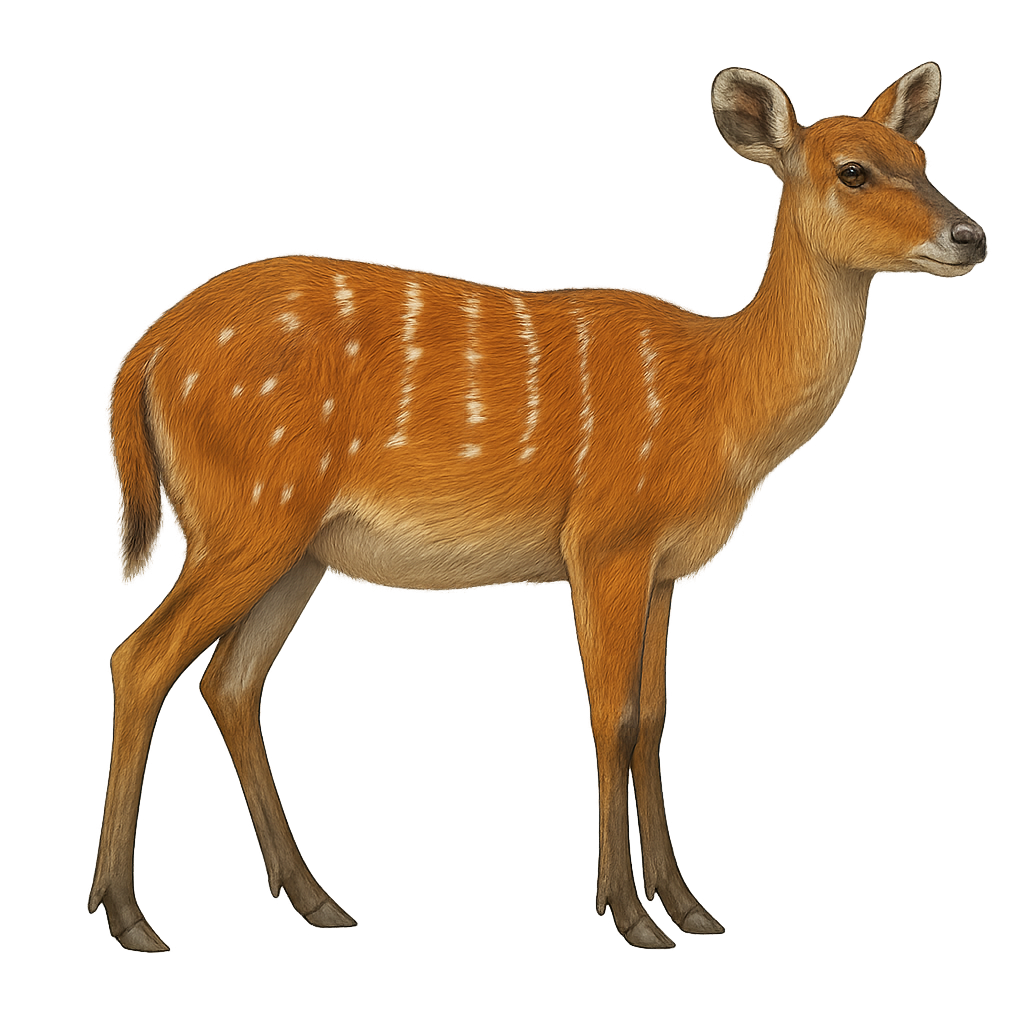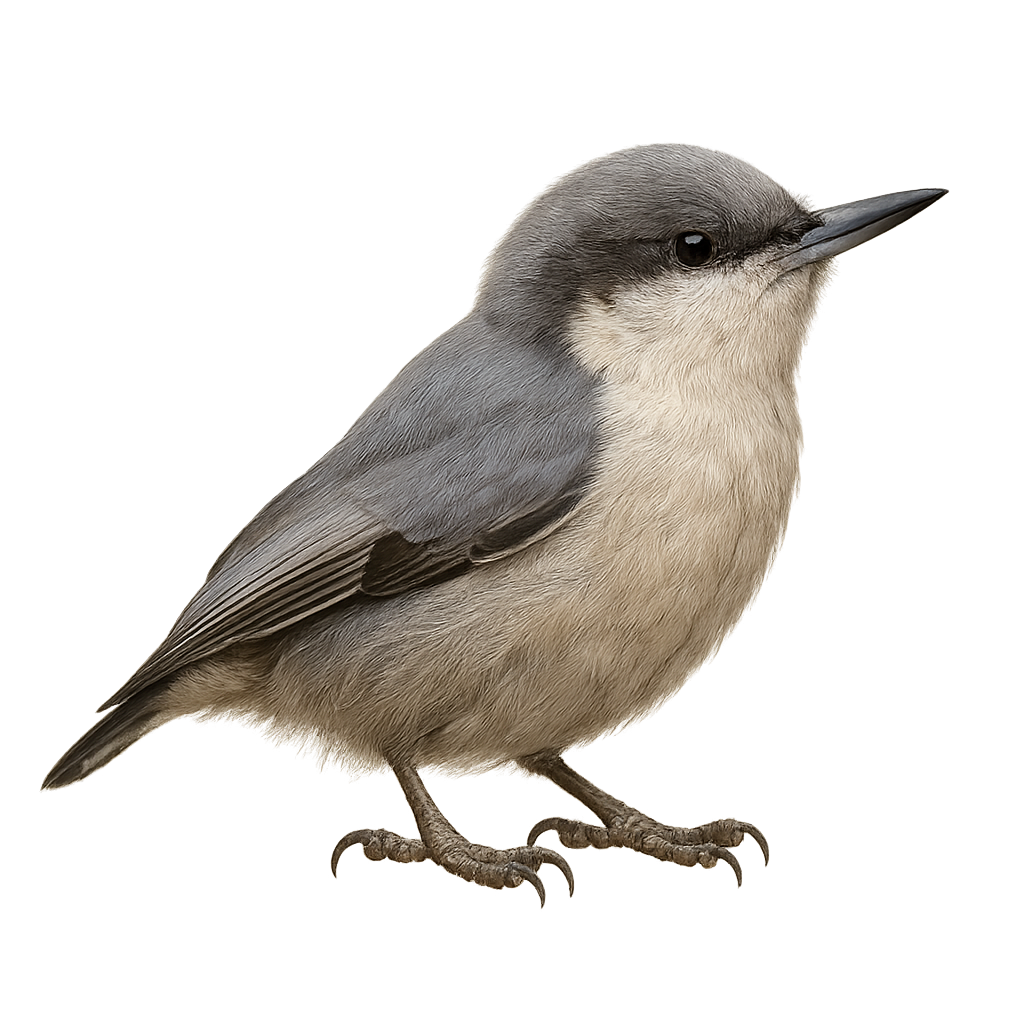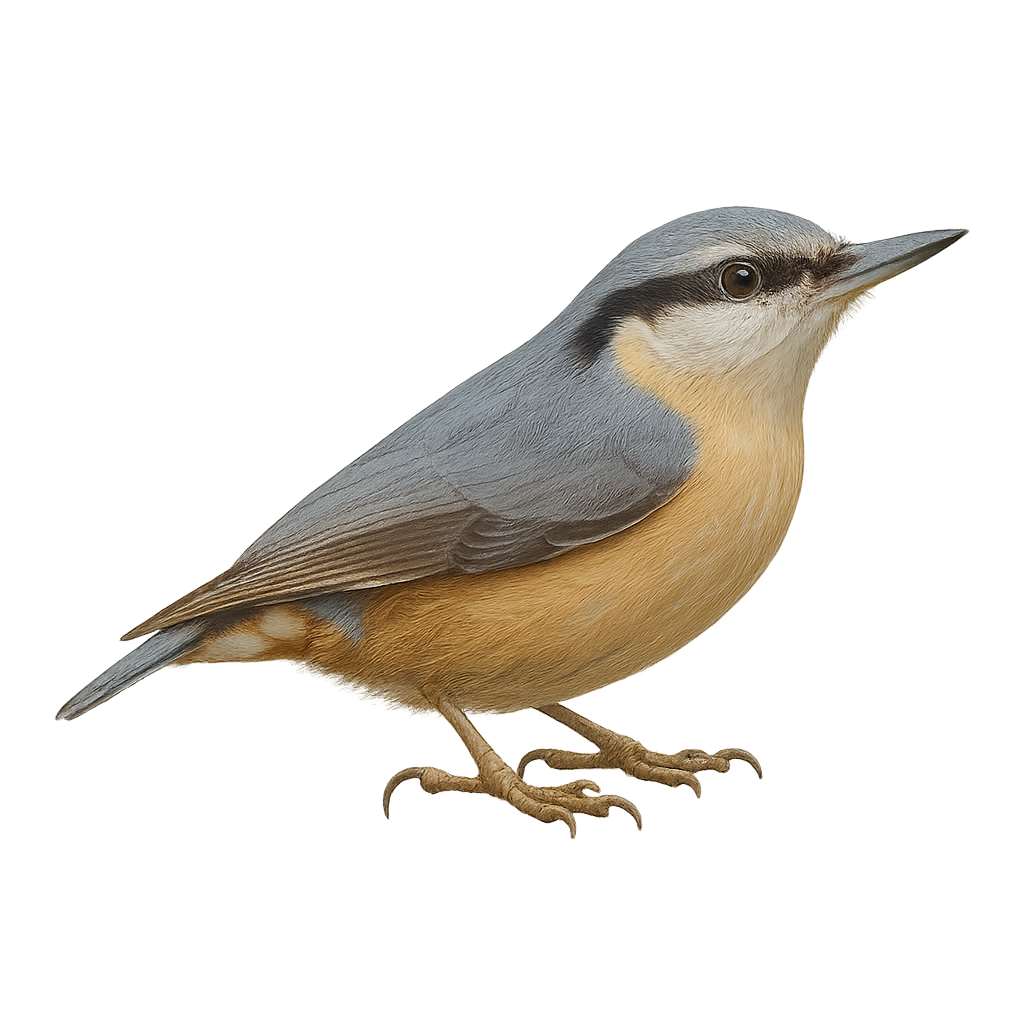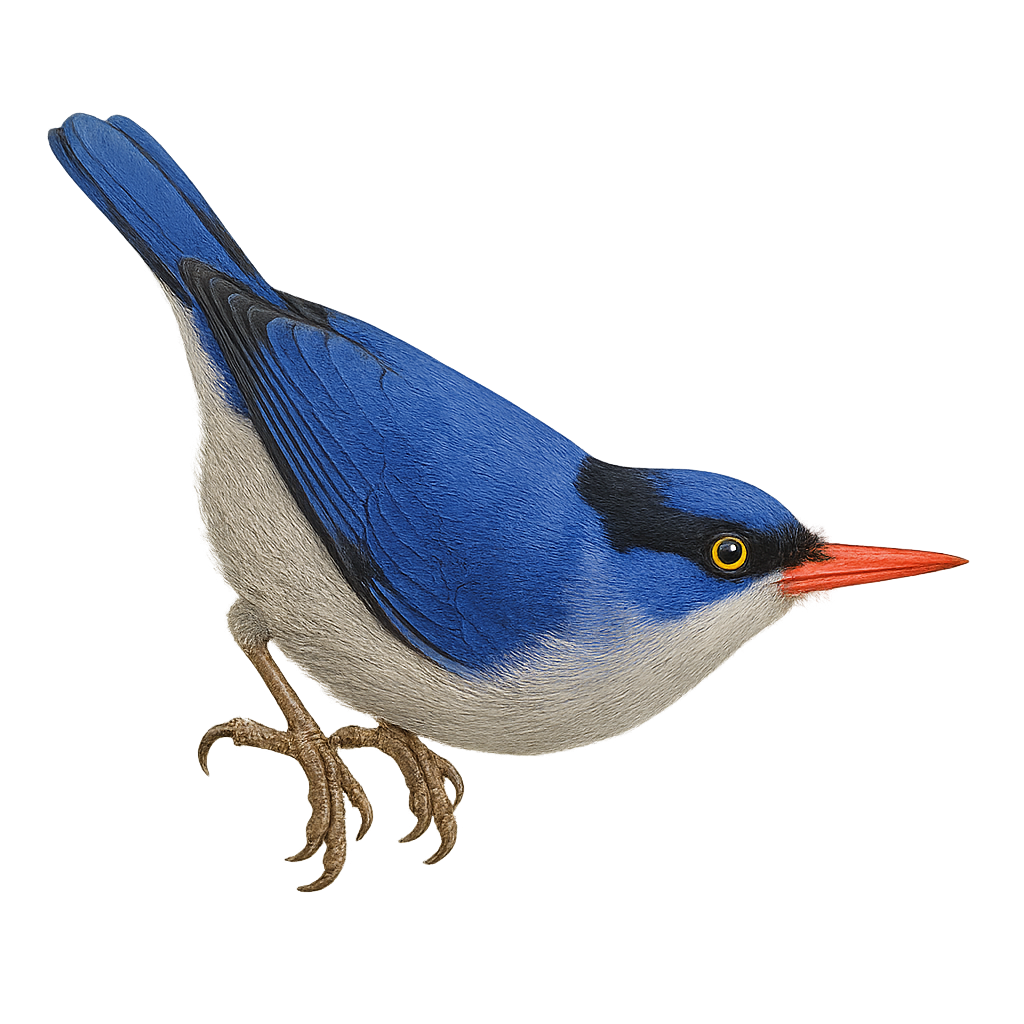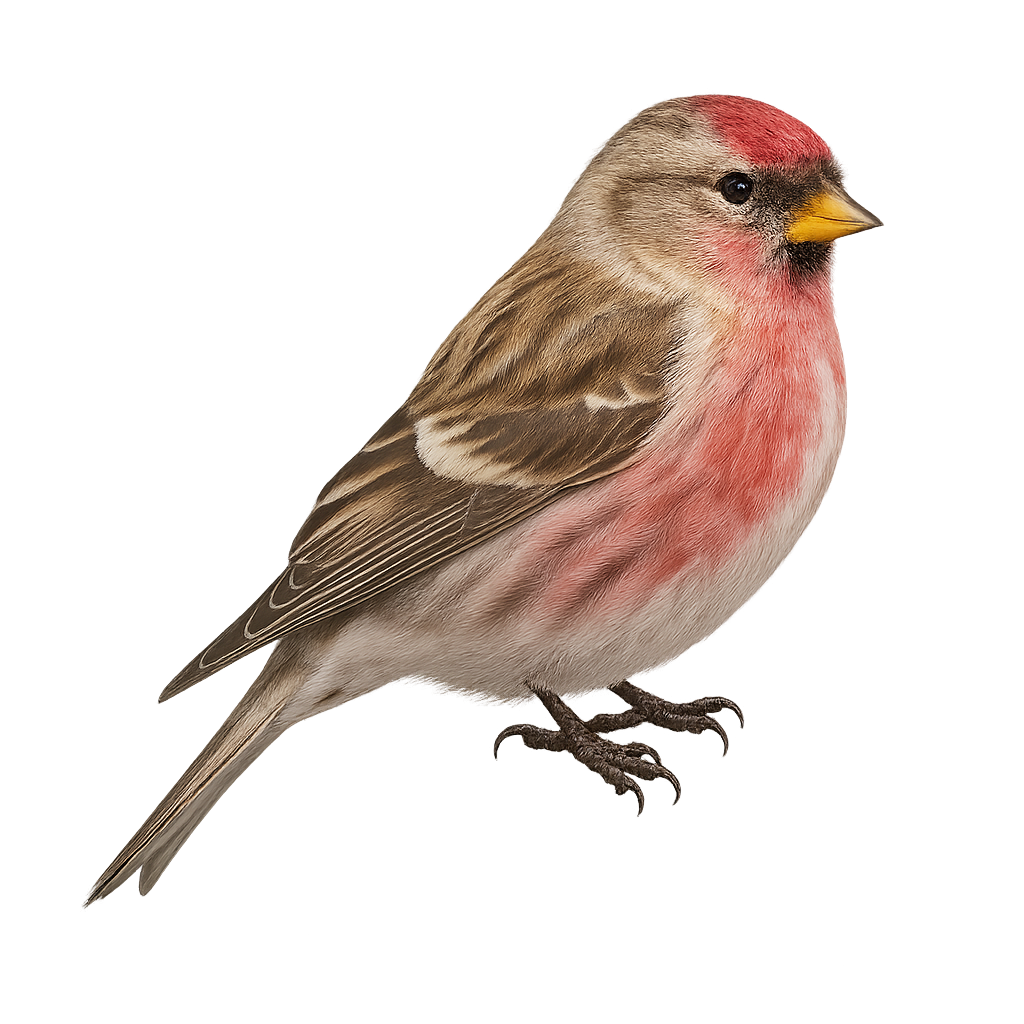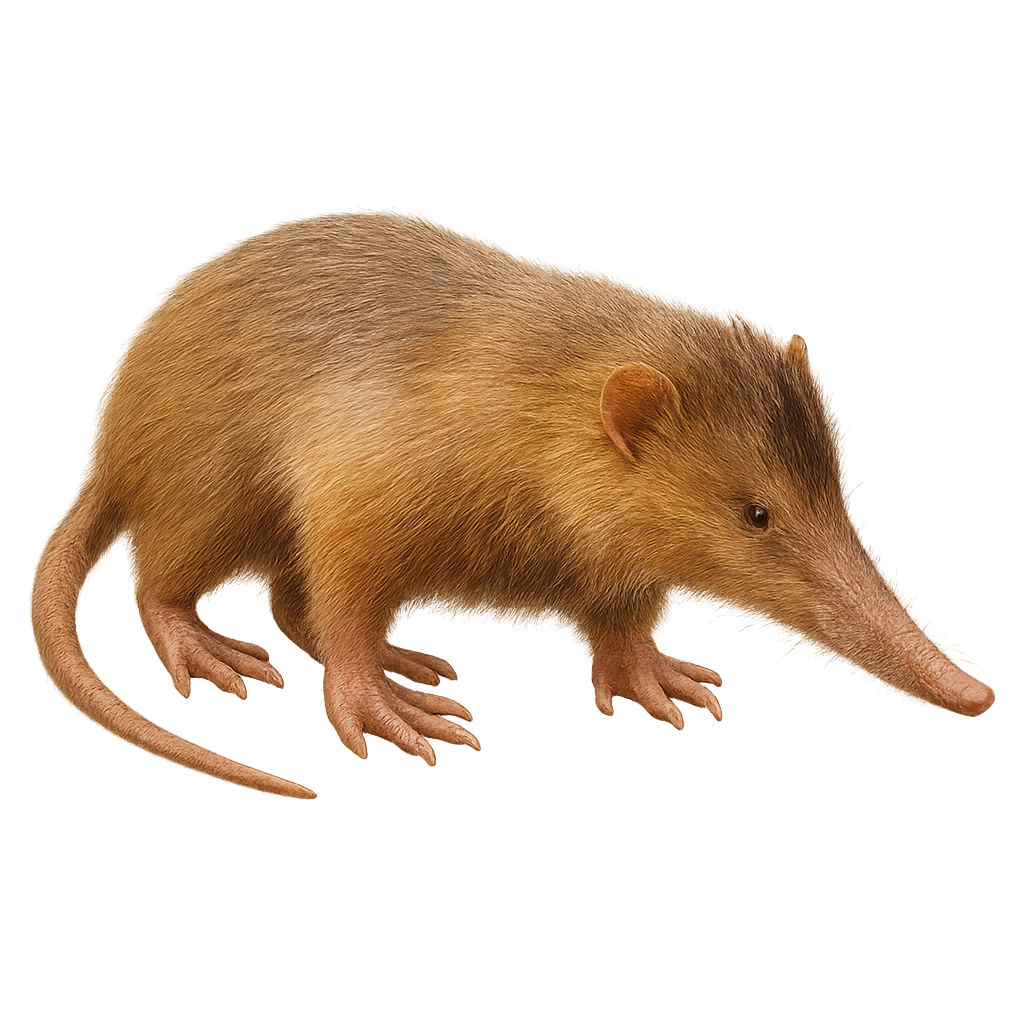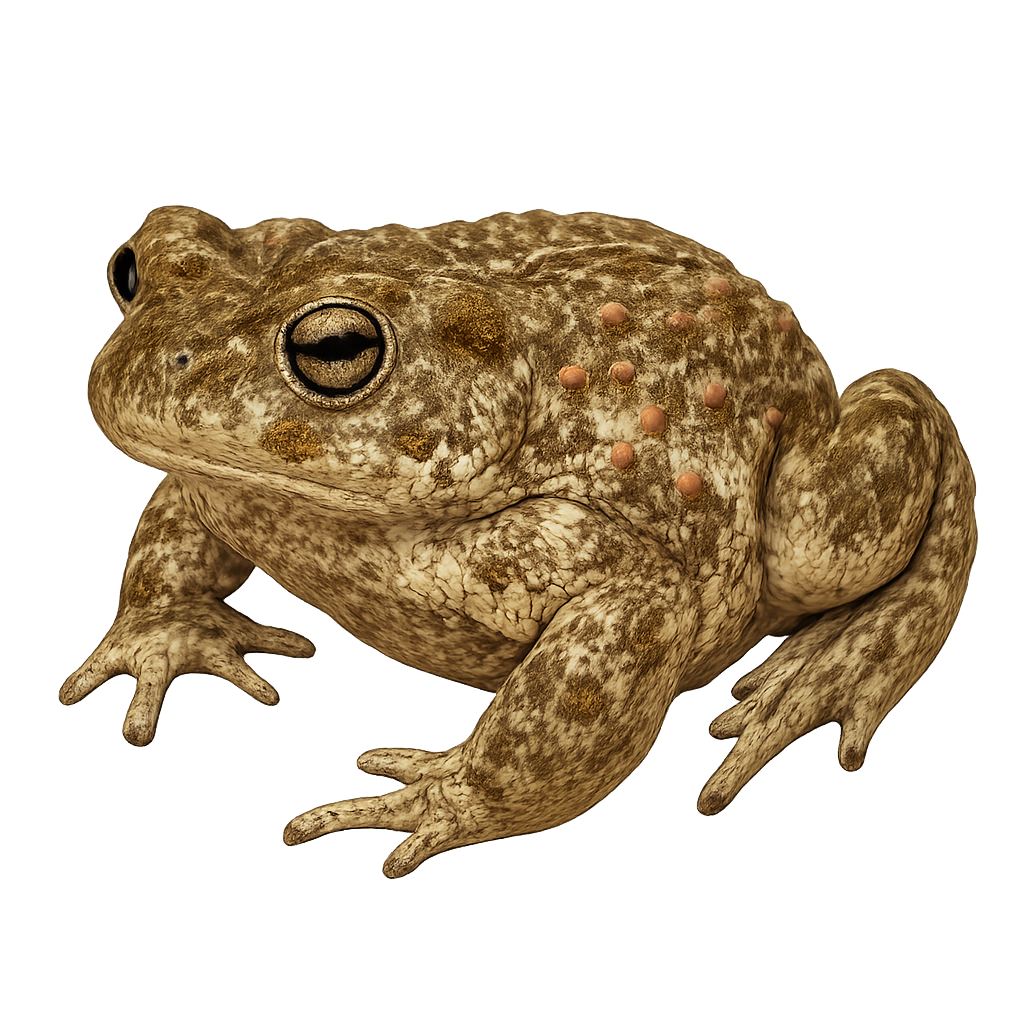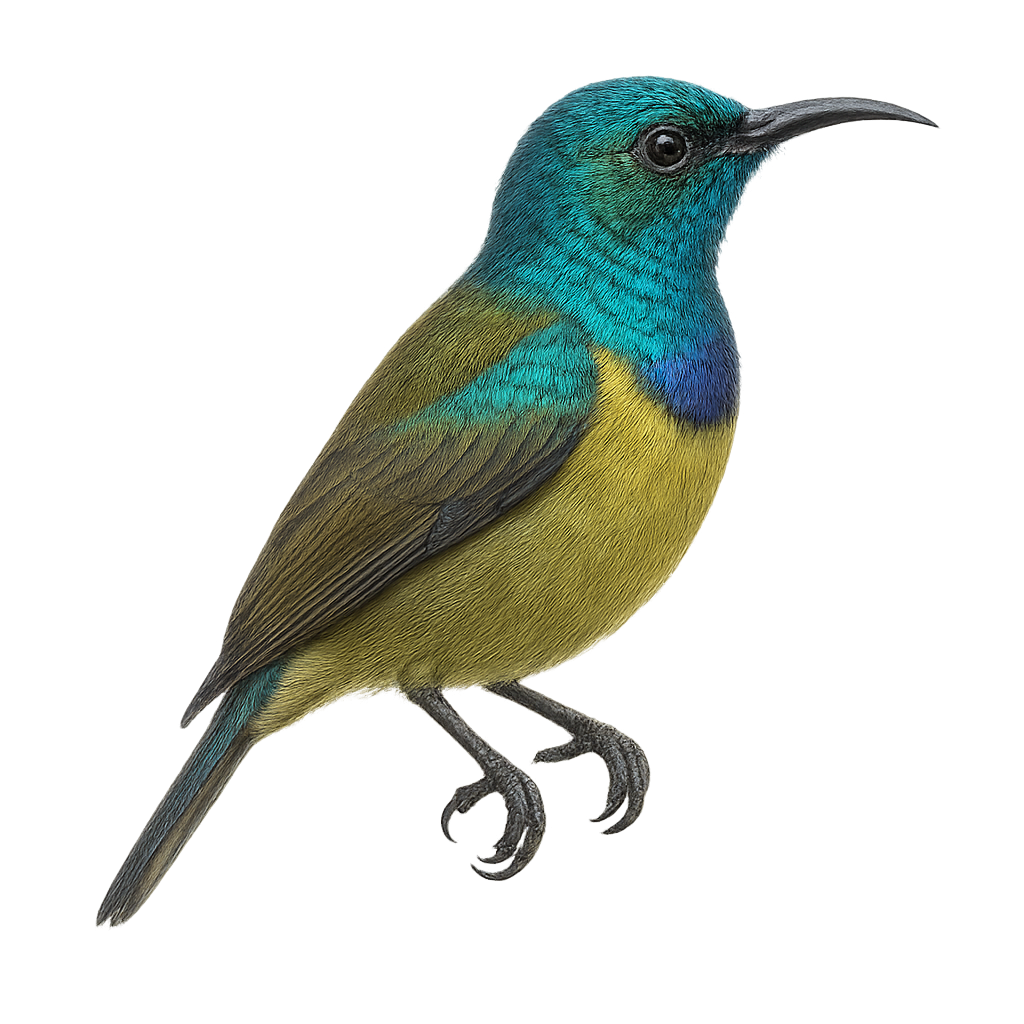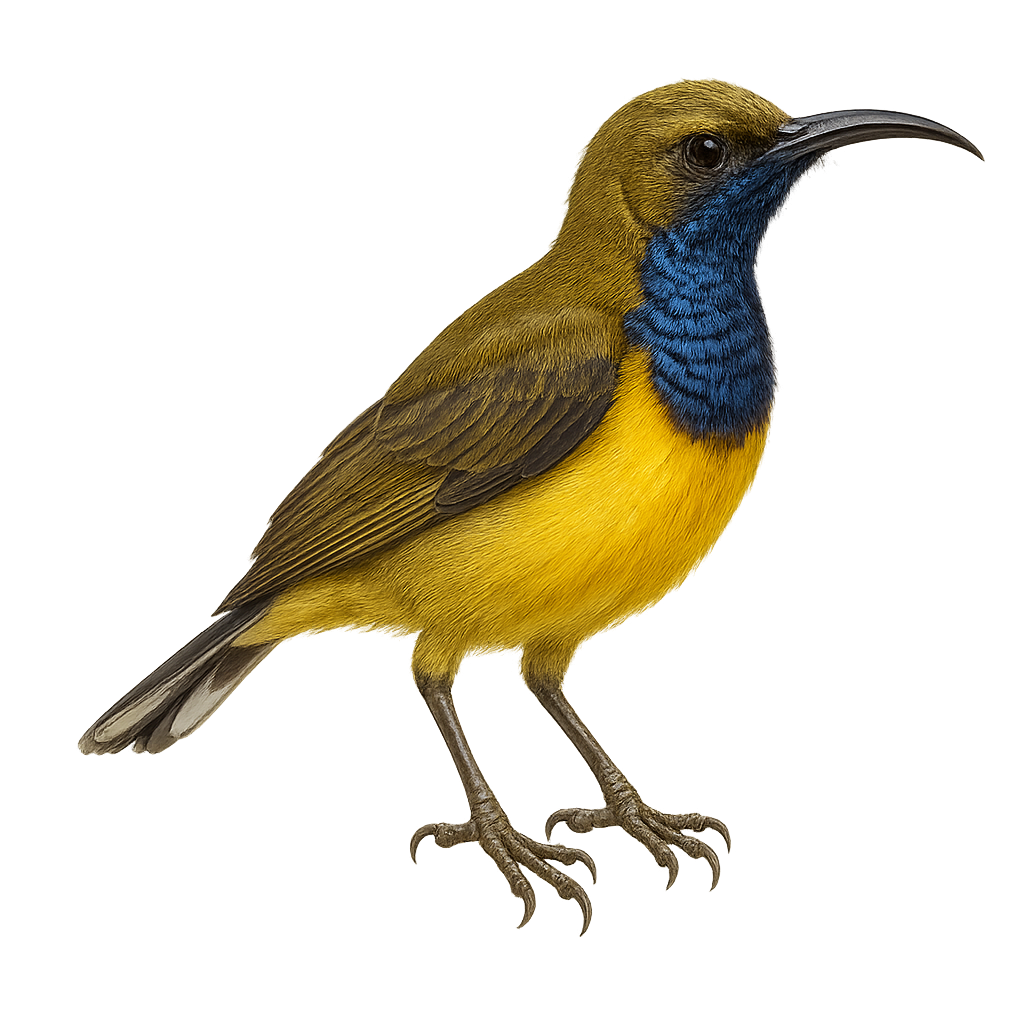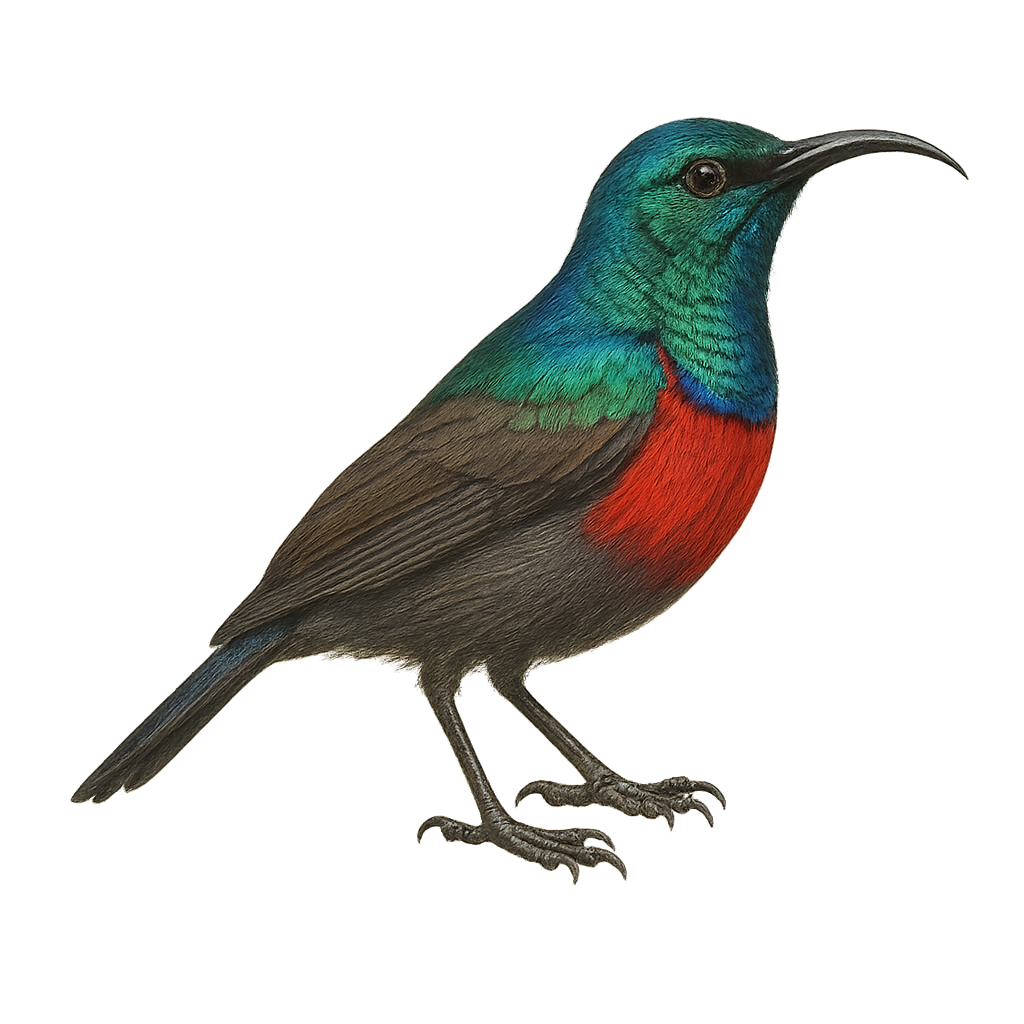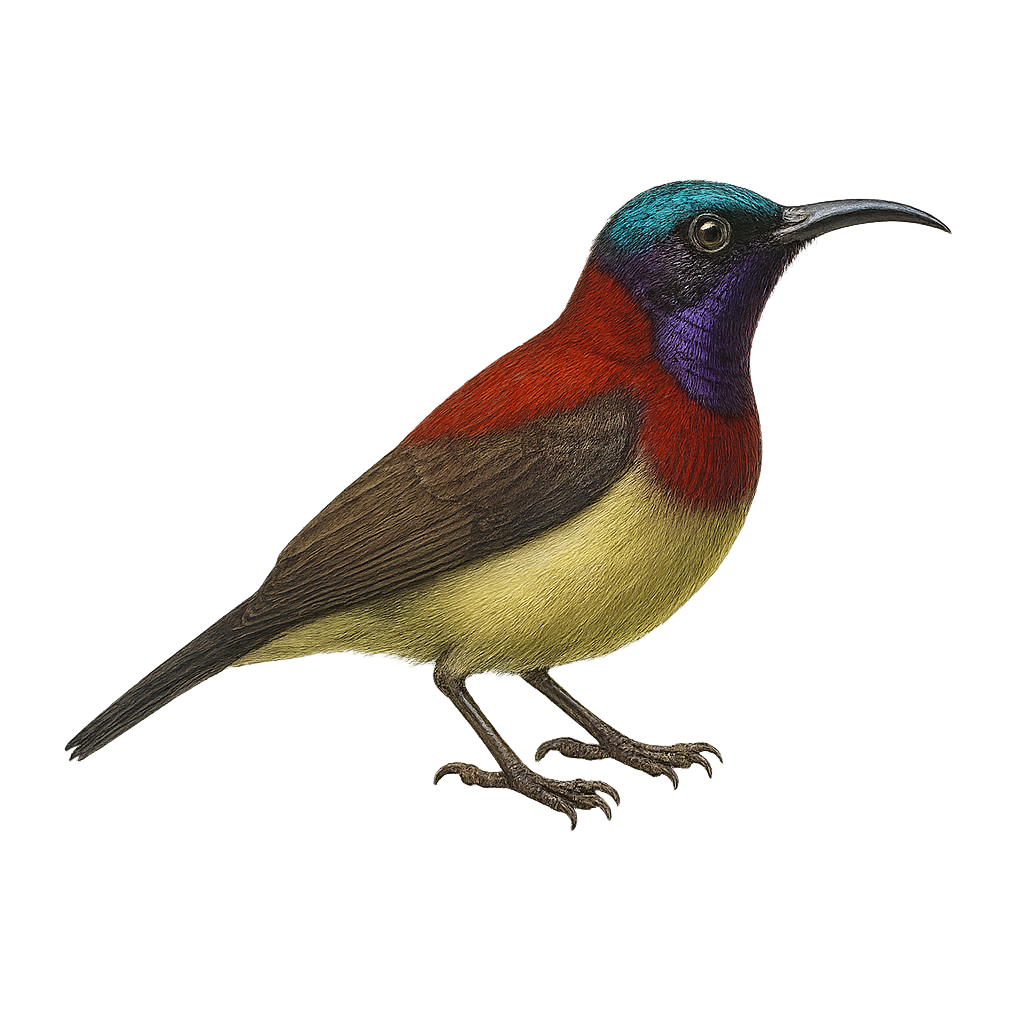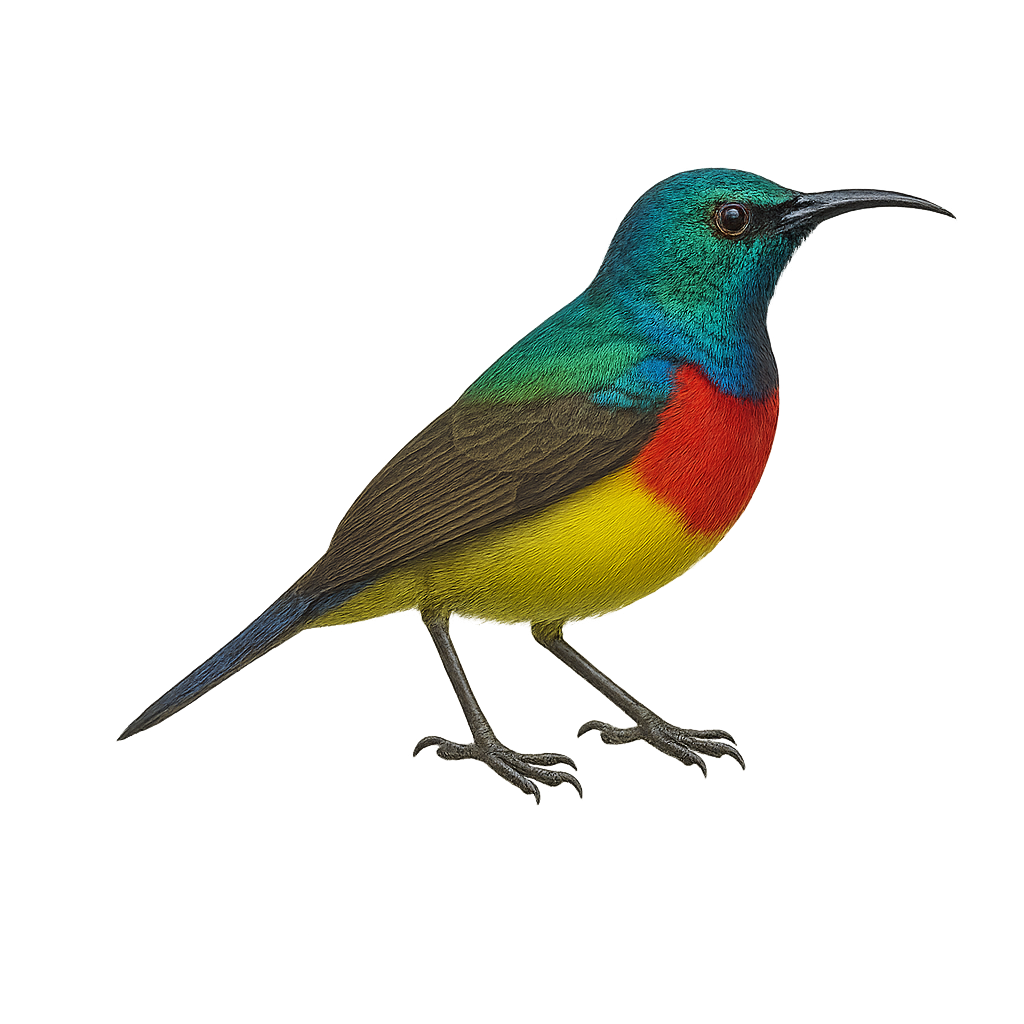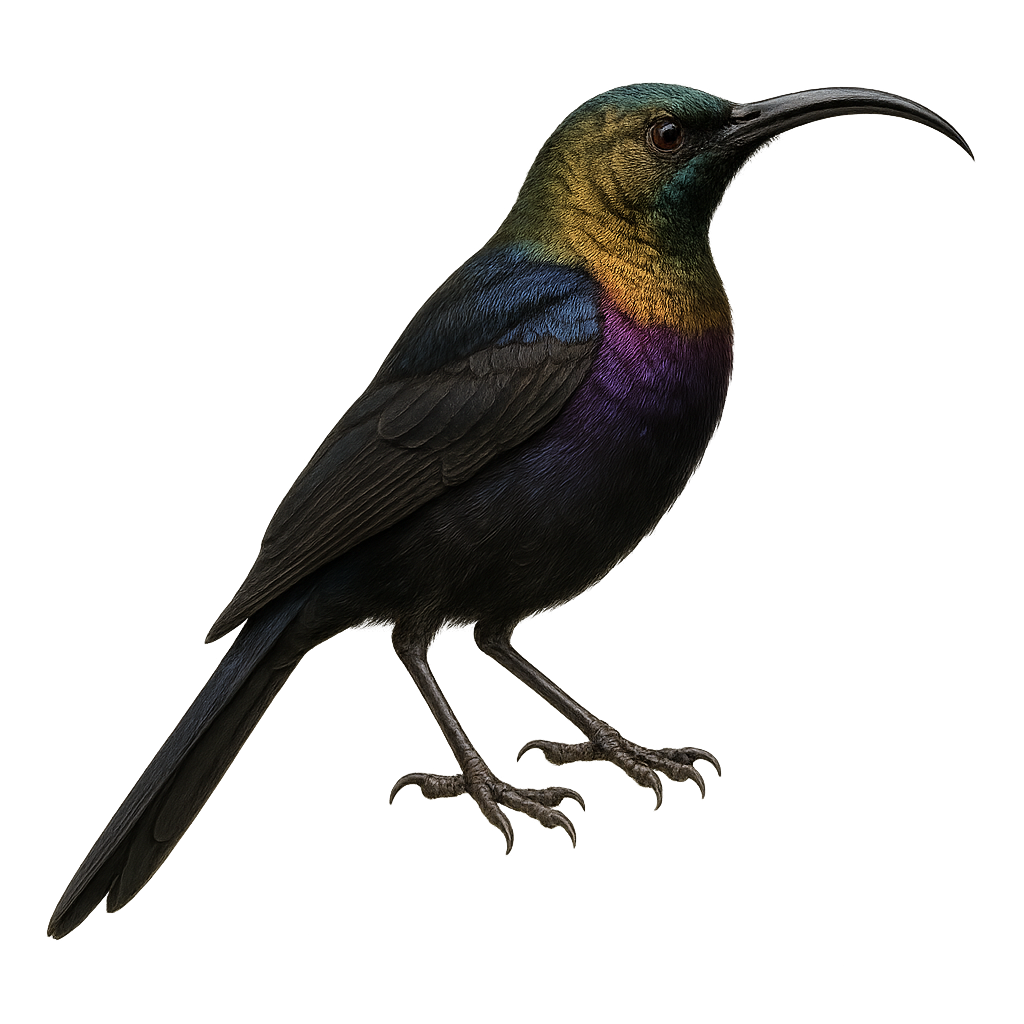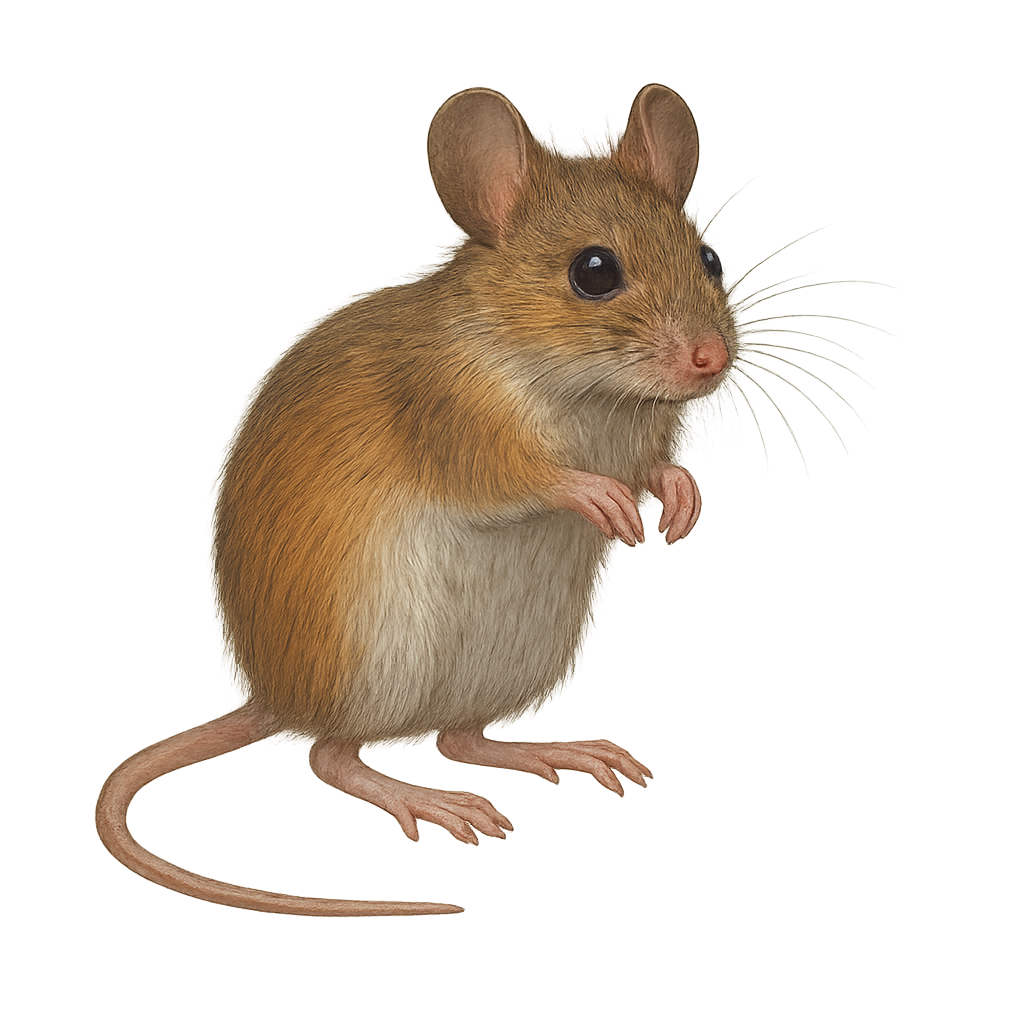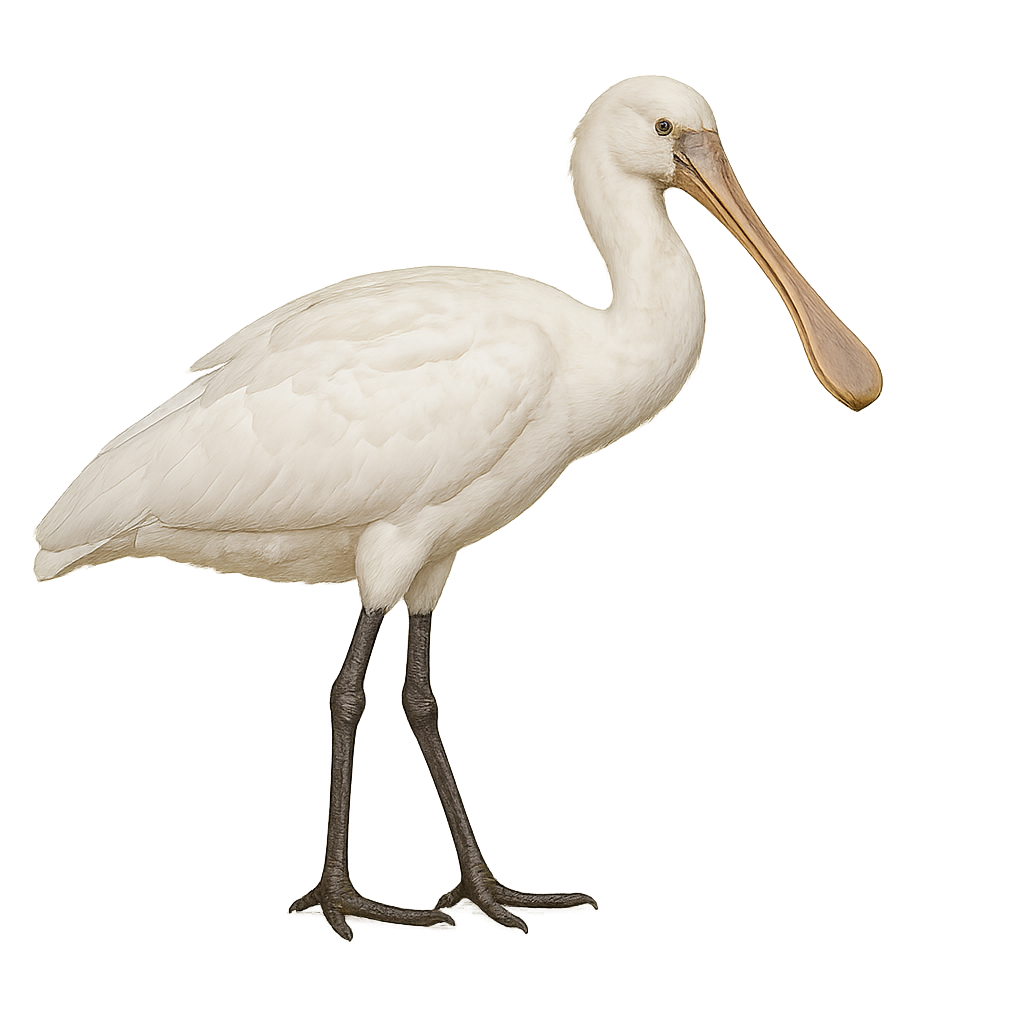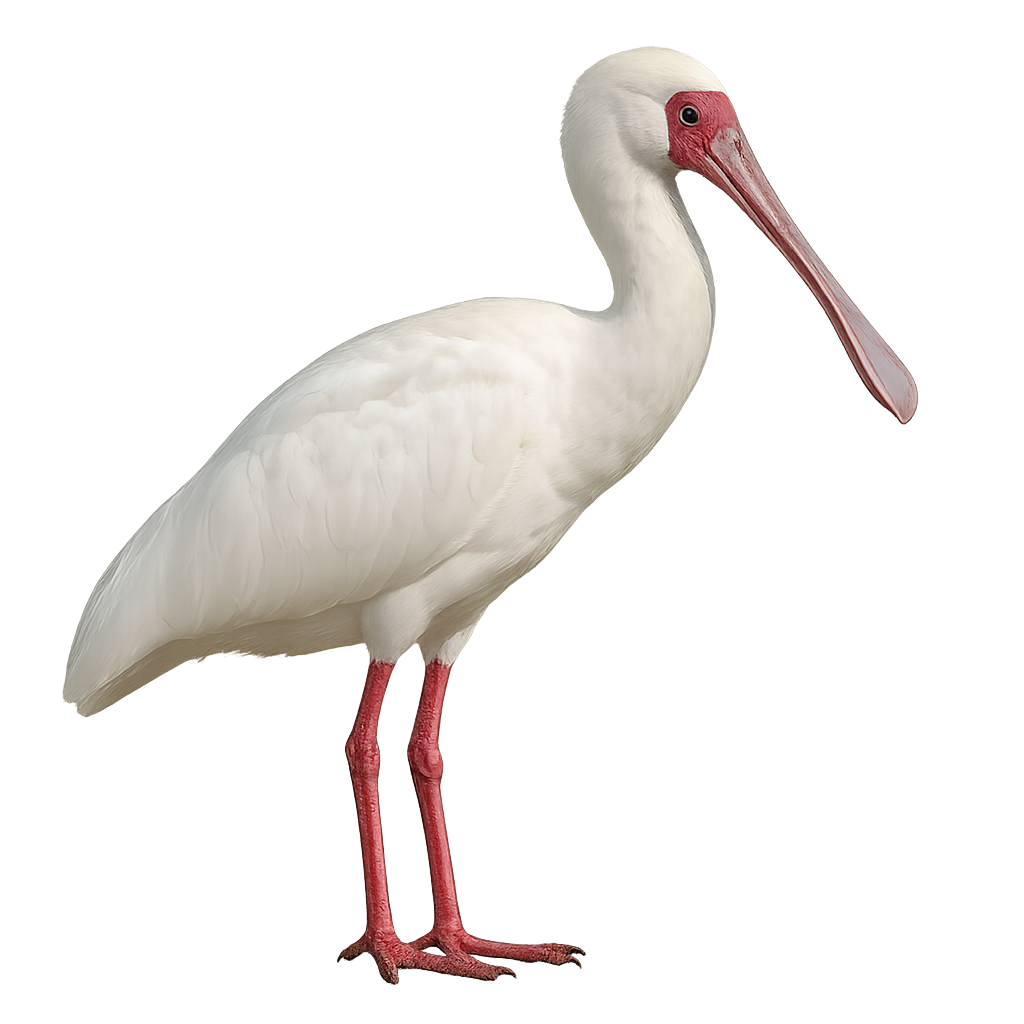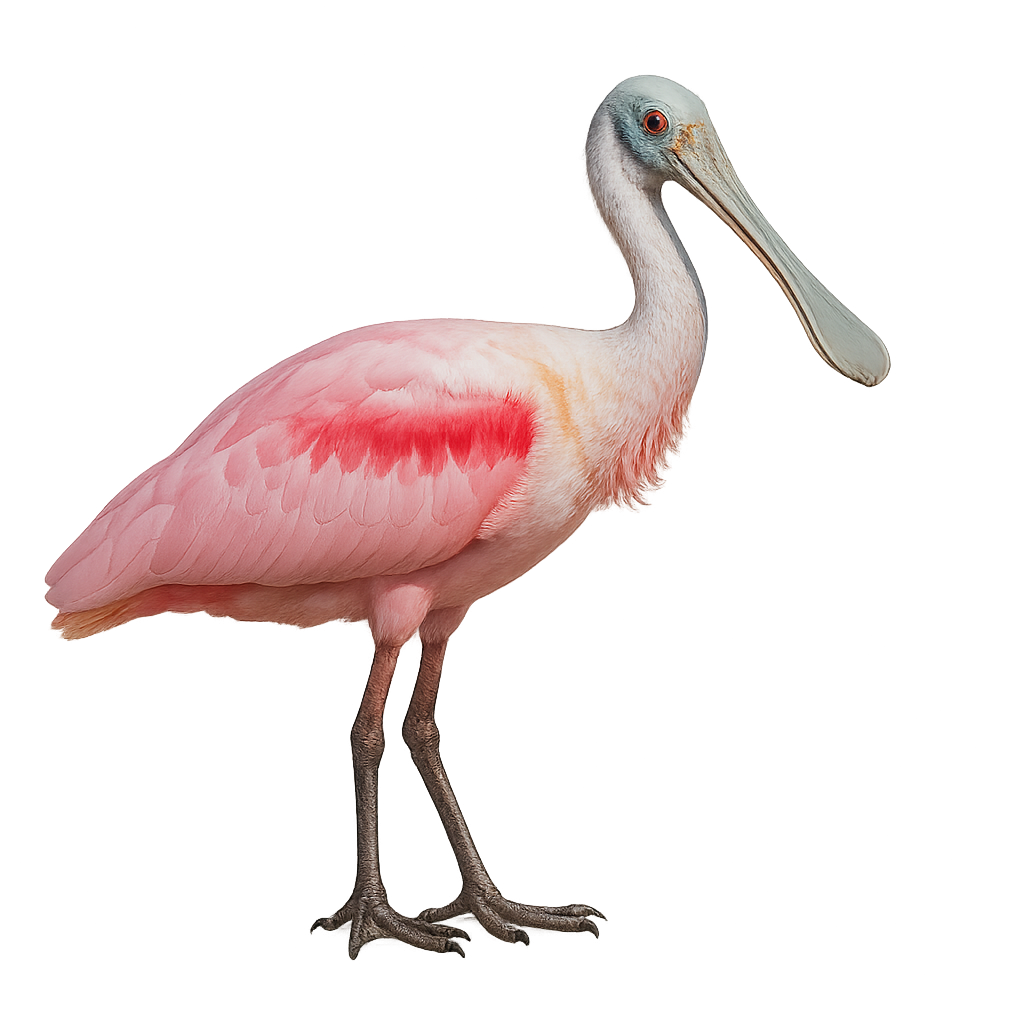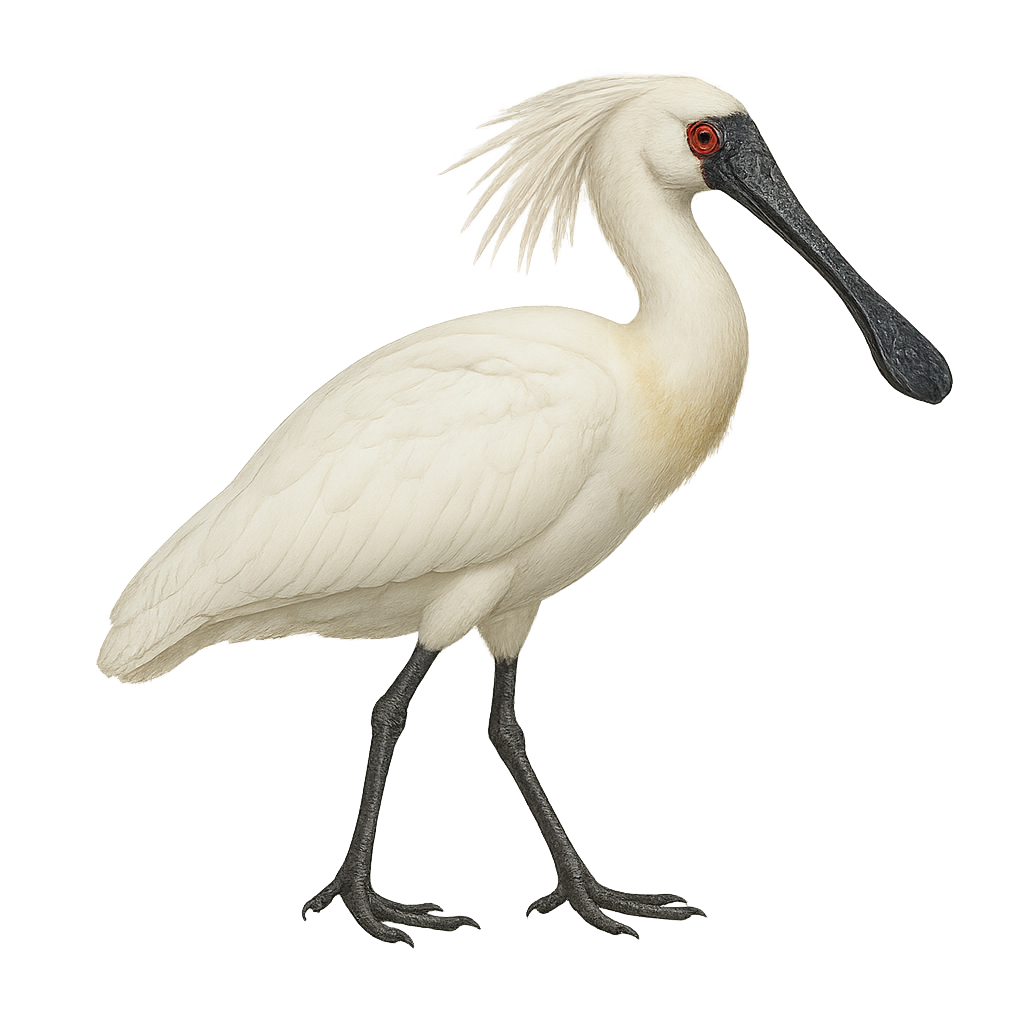The Callicebus personatus, commonly known as the masked titi monkey, is a medium-sized primate native to the tropical forests of southeastern Brazil. It is characterized by its dark face surrounded by dense, silky brownish fur. These monkeys live in small family groups and are known for their strong social bonds, often seen grooming each other. They primarily feed on fruits, but their diet also includes leaves and insects. Their natural habitat is threatened by deforestation, leading to a decline in their population. Despite this, they sometimes adapt to fragmented forest areas.
The white-bellied spider monkey, Ateles belzebuth, is an arboreal primate primarily inhabiting the tropical forests of South America. Recognizable by its black fur and distinctive white face, it has long limbs and a prehensile tail that enable agile movement through the canopy. This social monkey lives in groups of up to 30 individuals, although they often split into smaller subgroups to forage. Primarily frugivorous, it also consumes leaves, flowers, and insects. Unfortunately, Ateles belzebuth is threatened by deforestation and hunting, leading to a decline in its population.
The Macaca sinica, commonly known as the toque macaque, is a primate species endemic to Sri Lanka. Recognizable by its tuft of hair on the top of its head, this monkey has a golden-brown coat with a lighter belly. It primarily inhabits tropical forests but also adapts to urban and agricultural areas. Highly social, it lives in hierarchical groups where females dominate. Its diet is omnivorous, consisting of fruits, leaves, insects, and occasionally small vertebrates. Unfortunately, deforestation and human expansion threaten its natural habitat, classifying it as vulnerable according to the IUCN.
Chlorocebus pygerythrus, commonly known as the vervet monkey, is a medium-sized primate found primarily in sub-Saharan Africa. It is characterized by its grey-green fur, black face surrounded by white hair, and long, slender tail. These monkeys are highly adaptable and can inhabit a variety of environments, from savannas to riverine forests. They are known for their intelligence and ability to adapt to urban settings. Vervets live in complex social groups where hierarchy and communication play a crucial role. They are diurnal, spending most of the day foraging for food, which mainly consists of fruits, leaves, and insects.
The sitatunga, or Tragelaphus spekii, is a semi-aquatic antelope found mainly in the marshes and wetlands of Central and East Africa. It is easily recognizable by its reddish-brown coat, vertical white stripes, and long spiraled horns in males. Sitatungas are well adapted to their aquatic habitat, with long, splayed hooves that allow them to move easily through swamps. They are primarily active at dawn and dusk, feeding on aquatic plants, grasses, and leaves. Sitatungas are shy and elusive animals, preferring to remain hidden in dense vegetation to avoid predators.
The White-breasted Nuthatch is a small bird with distinctive plumage, featuring a bright white breast, blue-gray back, and black cap. It is often seen climbing down tree trunks headfirst in search of insects and seeds. Its call is a nasal "yank-yank," easily recognizable. It primarily inhabits deciduous and mixed forests in North America. Although generally solitary, it can be seen in small groups outside the breeding season. The White-breasted Nuthatch is a resilient bird, capable of adapting to various habitats, including urban parks and gardens.
The pygmy nuthatch (Sitta pygmaea) is a small forest passerine, measuring 9–11 cm in length and weighing 8–12 g, identified by its slate-blue dorsal plumage, brighter blue crown, and contrasting white throat. Endemic to western North America’s ponderosa and Jeffrey pine forests, it forages for insects, seeds, and resin in bark crevices. Highly social, it forms stable family groups year-round and often clings upside-down on trunks and branches. The breeding season runs from 01.04–30.06; it nests in cavities, laying 5–9 eggs incubated for 14–17 days, with hatchlings emerging between 15.04 and 17.07.
The Eurasian nuthatch is a small woodland bird found primarily in mixed and deciduous forests across Europe and Asia. It is easily recognized by its blue-grey and orange plumage, light belly, and distinctive black mask around its eyes. This bird is particularly known for its ability to climb upside down on tree trunks, allowing it to reach areas inaccessible to other birds. It primarily feeds on insects, seeds, and nuts.
The Velvet-fronted Nuthatch is a small, colorful bird, primarily blue with a distinctive yellow cap. It is often seen in the dense tropical forests of Southeast Asia, where it moves nimbly along trunks and branches in search of insects and seeds. Its social behavior is notable, as it often travels in small groups, emitting high-pitched calls to communicate. Although primarily arboreal, it occasionally descends to the ground to forage. Its ability to climb headfirst down trees is characteristic of nuthatches. The Velvet-fronted Nuthatch is a resilient bird, capable of adapting to various forest habitats, but remains vulnerable to deforestation.
The Plain Xenops is a small bird from the Furnariidae family, primarily found in the tropical forests of Central and South America. It measures about 12 cm in length and is characterized by its brown plumage with lighter shades on the belly. Its slightly curved beak allows it to probe tree bark for insects, its main food source. This bird is often seen climbing tree trunks, much like woodpeckers. Although discreet, its high-pitched, repetitive song can be heard through the dense canopy. The Plain Xenops plays an important role in the ecosystem by helping control insect populations.
The Common Redpoll, Acanthis flammea, is a small finch in the Fringillidae family. It is easily identified by its brown streaked plumage and bright red cap. Males often have a rosy breast, while females are duller. This small bird is well adapted to cold climates and is primarily found in boreal forests and arctic regions. It mainly feeds on seeds but also consumes insects in summer. The Common Redpoll is a gregarious bird, often seen in flocks, especially in winter. It is known for its irregular migrations, influenced by food availability.
The Hispaniolan solenodon (Solenodon paradoxus) is a venomous insectivorous mammal resembling a shrew, endemic to the Caribbean island of Hispaniola (Dominican Republic and Haiti). It inhabits moist forests, shelters in burrows or under logs, and feeds primarily on arthropods, worms, molluscs and small vertebrates. Crepuscular and nocturnal, it moves in a zigzag gallop and produces varied vocalizations for communication and defense.
The yellow-bellied toad is a small amphibian 30–40 mm long, with olive-brown dorsal coloration and bright yellow belly mottled with black. It inhabits temporary shallow wetlands at forest edges and meadows, feeding on insects, spiders and worms. During breeding, males emit high-pitched calls near shallow pools and females lay clusters of eggs on aquatic vegetation.
The Green Sunbird, or Anthreptes rectirostris, is a small, colorful bird from the Nectariniidae family, primarily found in West and Central Africa. It is distinguished by its vibrant plumage, often metallic green in males, and its slender, straight bill adapted for nectar feeding. This nectarivore is commonly seen in tropical rainforests, forest edges, and occasionally in gardens. Its song is a mix of trills and melodious chirps. Although primarily nectarivorous, it supplements its diet with insects, especially during the breeding season. The Green Sunbird plays a crucial role in plant pollination, thus contributing to the biodiversity of its habitat.
The Red-chested Sunbird, or Cinnyris erythrocercus, is a small, colorful bird belonging to the Nectariniidae family. It is primarily found in East Africa, particularly in Uganda, Kenya, and Tanzania. This sunbird is distinguished by its vibrant plumage: males have a bright red throat and chest, contrasting with a metallic green back and white belly. Females, on the other hand, display more subdued tones with olive-brown plumage. These birds are often seen in gardens, open forests, and savannas, where they primarily feed on nectar, but also insects. Their flight is fast and direct, and they are known for their melodious and complex song.
The Collared Sunbird, a small bird with dazzling plumage, is a gem of African forests. Its metallic green back contrasts with its bright yellow belly, and its distinctive collar adds a touch of elegance. Measuring about 10 cm, it is agile and fast, moving from flower to flower to feed on nectar, supplemented by insects. Its thin, curved beak is perfectly adapted to its diet. This sunbird is often seen in pairs or small groups, emitting melodious songs. It primarily inhabits humid tropical forests but also adapts to gardens and plantations. Although generally not very shy, it remains cautious of threats.
The Olive-backed Sunbird, or Nectarinia jugularis, is a small, vibrant bird found primarily in Southeast Asia and Australia. Males display a bright yellow throat and olive back, while females are more subdued in color. Known for their slender, curved beaks, these birds primarily feed on nectar but also consume insects to supplement their diet. They are often seen in gardens, tropical forests, and mangroves, playing a crucial role in flower pollination. Their song is a mix of high-pitched, melodious chirps, often heard at dawn.
The Scarlet-chested Sunbird, Chalcomitra senegalensis, is a striking bird from the Nectariniidae family. Males are easily identified by their vivid red chest and metallic green back, while females are more subdued with brown and gray tones. They primarily feed on nectar but also consume insects, especially during breeding season. Found in diverse habitats from savannas to open forests, they often stay near water sources. Known for their swift flight and melodious songs, these birds are a delight to observe. Although their conservation status is currently of concern, they remain relatively common within their range.
The Variable Sunbird, or Cinnyris venustus, is a small, colorful bird belonging to the Nectariniidae family. It is primarily found in sub-Saharan Africa, where it inhabits various environments such as savannas, open forests, and gardens. This sunbird is recognizable by its vibrant plumage, with metallic green hues on its back and yellow shades on its belly. Males often display brighter colors than females. They primarily feed on nectar but also consume insects to supplement their diet. These birds are known for their fast and agile flight, allowing them to move easily between flowers.
The Purple Sunbird, or Cinnyris asiaticus, is a small bird found mainly in South Asia. Known for its vibrant plumage, especially in males, it displays metallic colors ranging from blue to violet. The female, on the other hand, has more subdued tones, with an olive-brown plumage. These birds are often seen in gardens, open forests, and urban areas, where they primarily feed on nectar, but also insects. Their slender, curved beak is perfectly adapted for extracting nectar from flowers. The Purple Sunbird is a very active bird, often seen flitting from flower to flower, playing a crucial role in plant pollination.
The Preuss's Sunbird is a small, brightly colored bird primarily found in the humid tropical forests of Central Africa. It is recognizable by its vibrant plumage, with metallic green and blue hues on its back and head, and a bright red chest. Males and females exhibit marked sexual dimorphism, with females having duller colors. This nectarivore primarily feeds on nectar but also consumes insects to supplement its diet. It plays a crucial role in the pollination of tropical plants. The Preuss's Sunbird is an active and agile bird, often seen darting quickly from flower to flower.
The Crimson Sunbird, Leptocoma minima, is a small, vibrantly colored bird belonging to the Nectariniidae family. It is primarily found in tropical and subtropical moist forests, as well as in shrublands and gardens. This bird is distinguished by its striking plumage, featuring metallic shades of red, green, and blue. Males often display brighter colors than females, who are generally duller. The Crimson Sunbird primarily feeds on nectar but also consumes insects to supplement its diet. It plays a crucial role in pollinating flowers, thus contributing to the biodiversity of its habitat.
The Regal Sunbird, Cinnyris regius, is a small African hummingbird-like bird known for its vibrant colors. The male displays a dazzling plumage with shades of metallic green, blue, and red, while the female is more subdued with brown and green tones. This nectarivore is commonly found in tropical and subtropical forests, feeding primarily on nectar, but also on insects and spiders. Its slender, curved beak is perfectly adapted to reach the nectar of flowers. The Regal Sunbird is an active and agile bird, often seen flitting from flower to flower, playing a crucial role in the pollination of plants in its habitat.
The Tacazze Sunbird is a bird from the Nectariniidae family, mainly found in the mountainous regions of East Africa. It is easily recognizable by its iridescent plumage, which ranges from metallic green to deep purple, depending on the light angle. Males display brighter colors than females, who are generally duller. This bird primarily feeds on nectar but supplements its diet with insects and spiders. It is often seen in gardens, forests, and wooded areas, using its long curved beak to access flowers. The Tacazze Sunbird is a diurnal bird, active mainly in the morning and late afternoon.
The yellow-necked mouse, Apodemus flavicollis, is a small rodent belonging to the Muridae family. It is characterized by a distinctive yellow band around its neck, contrasting with its reddish-brown back and white belly. Primarily nocturnal, it inhabits forests, hedgerows, and sometimes gardens. Its diet includes seeds, fruits, and insects. Agile and fast, it can evade predators effectively. It reproduces several times a year, with litters of 4 to 7 young. Although common, it plays a crucial role in the ecosystem by dispersing seeds and controlling insect populations.
The Eurasian Spoonbill is a medium-sized bird primarily found in wetlands across Europe, Asia, and North Africa. It measures about 80 to 95 cm in length, with a wingspan of 120 to 130 cm, and weighs between 1.5 and 2.5 kg. Its plumage is predominantly white, with a long spoon-shaped bill that allows it to forage in shallow waters, primarily feeding on aquatic invertebrates, small fish, and crustaceans. The Eurasian Spoonbill is often seen in groups, feeding in marshes, rice fields, or estuaries. It is migratory, moving to warmer regions during the winter. While its population remains stable in certain areas, the Eurasian Spoonbill faces threats related to habitat loss, water pollution, and urbanization.
The African Spoonbill, or Platalea alba, is a striking wading bird known for its spoon-shaped bill, which it uses to sift through water for food. It boasts a bright white plumage that contrasts with its reddish legs and bill. This bird is primarily found in the wetlands of sub-Saharan Africa, frequenting marshes, lakes, and rivers. The African Spoonbill is a gregarious bird, often seen in groups, and feeds mainly on small fish, crustaceans, and aquatic insects. Its breeding season varies by region but is generally tied to the rainy season when food resources are plentiful.
The Roseate Spoonbill is a large wading bird with striking pink plumage, measuring between 71 and 86 cm in length and a wingspan of 120 to 135 cm. Its long, spatula-shaped bill is used to sweep shallow waters side to side in search of prey. Adults have a greenish bare head, white neck and back, and vivid pink wings with carmine highlights. Juveniles are paler, with a feathered head and lighter pink plumage. This species feeds primarily on small fish, crustaceans, and aquatic insects, captured by filtering mud in wetlands. It inhabits coastal marshes, mangroves, lagoons, and estuaries from the southern United States to South America. Although listed as Least Concern by the IUCN, the Roseate Spoonbill remains vulnerable to habitat degradation, particularly due to pollution and loss of wetlands.
The Royal Spoonbill, Platalea regia, is an elegant waterbird known for its pristine white plumage and distinctive spoon-shaped bill. It primarily inhabits wetlands in Australia, New Zealand, and some Pacific islands. This bird feeds mainly on small fish, crustaceans, and aquatic insects, which it captures by sweeping its bill through the water. The Royal Spoonbill is often seen in small groups, especially during the breeding season. It builds its nest in trees or shrubs near water. Although its conservation status is currently "Least Concern," habitat destruction remains a potential threat.
The Chestnut-bellied Seedeater, or Sporophila bouvreuil, is a small passerine bird belonging to the Thraupidae family. This seedeater is primarily found in South America, particularly in Brazil, Bolivia, and Argentina. It is easily recognizable by its distinctive plumage: males have a chestnut-brown belly and chest, contrasting with a dark gray back and head, while females display duller and more uniform tones. These birds typically inhabit open areas such as grasslands and savannas, where they primarily feed on seeds. Their melodious song is often heard during the breeding season, a time when they become more territorial.


